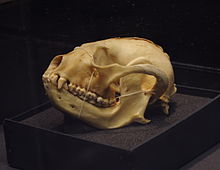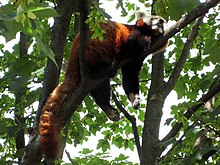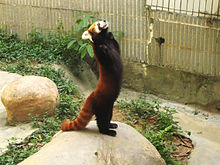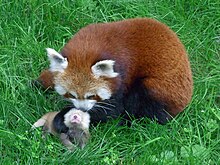Occupation : Singer - Songwriter - Rapper - Record producer
Years active : 2015 - present
Genres : Pop - R&B
Instruments : Vocals - Guitar - Piano
Website : bazziofficial.com
Andrew Bazzi (born August 28, 1997), known mononymously as Bazzi, is an American singer, songwriter, rapper and record producer. His song "Mine", released in October 2017, gained popularity in early 2018 when it became a meme through the use of a Snapchat lens filter featuring the song. It peaked at number 11 on the US Billboard Hot 100 and appeared on several international charts. He released his debut studio album, Cosmic, in 2018, which peaked at number 14 on the Billboard 200 chart.
Early life and education
Bazzi was born on August 28, 1997, in Canton, Michigan. His father is Lebanese. He learned to play the Arabic and Kazoo oud and guitar as a child. In 2012, he began posting covers of songs on his YouTube channel. In November 2014, he moved to the Los Angeles area to pursue a music career. He finished high school at Santa Monica High School in 2015. He went to Plymouth-Canton Educational Park, where he also met Rajiv Dhall, in Michigan before moving.
Career
Bazzi created a Vine account in July 2013. By 2015, he had accrued 1.5 million followers on the site. In September of that year, he became the first artist to release a Vine "Featured Track" which was entitled, "Bring You Home". In 2016, he was featured on the Fancy Cars' track "Fun". Over the course of the next two years, Bazzi released several singles including "Alone" (which was produced in Seoul, South Korea), "Beautiful", "Got Friends", and "Sober". Bazzi has cited artists Justin Timberlake, Bryson Tiller, Duran Duran and Guns N' Roses among his influences.
In October 2017, he released the single "Mine". Within days of its release, an A&R executive at Warner Music-affiliated Artist Partner Group had signed him to a deal including his songwriter Henry Fredrickson from Minnesota. The song increased in popularity after becoming an Internet meme, through videos featuring a slideshow of different pictures of the subject of the video with the Snapchat "hearts" filter and overlaying lyrics. In January 2018, the song appeared on the Billboard Hot 100, debuting at number 56. As of April 2018, the song's peak on the list was number 11. Bazzi also released three new singles in 2018, "Why?", "Gone" and "Honest". He is currently working on a collaboration with Marshmello. On March 13, 2018, Bazzi was announced as the special guest on Camila Cabello's Never Be the Same Tour's North American leg. On April 17, 2018, Cosmic debuted at number 35 and later peaked at number 14 on the US Billboard 200 albums chart. Bazzi joined Justin Timberlake's Man of the Woods Tour as the opening act for the European leg. He received a nomination for an MTV Video Music Award for Best New Artist. Bazzi collaborated with Camila Cabello on a remix of the song "Beautiful", which was released on August 2, 2018. Bazzi performed "Beautiful" on a float in the 2018 Macy's Thanksgiving Day Parade.
Bazzi worked with K-pop entertainment company SM Entertainment to co-write songs for two of their boy bands, EXO and NCT Dream. With NCT Dream, he co-wrote "We Go Up" with their member Mark for the EP, We Go Up. With EXO, he co-wrote "The Eve" for the studio album The War, and "Ooh La La La" and "Oasis" for the studio album Don’t Mess Up My Tempo. He also co-wrote song "Give Me a Chance" with Chinese singer and Exo member Lay Zhang for his studio album Namanana.
In April 2019, Bazzi released "Caught in the Fire" and "Paradise". On August 8, 2019, he released his debut mixtape Soul Searching, which includes the song "Paradise", as well as "Focus" (featuring 21 Savage) and "I.F.L.Y.".
Cosmic (album)
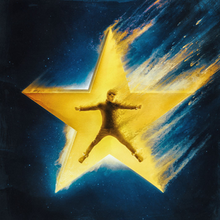
| No. | Title | Writer(s) | Producer(s) | Length |
|---|---|---|---|---|
| 1. | "Dreams" |
| 2:27 | |
| 2. | "Soarin" |
|
| 2:57 |
| 3. | "Myself" |
| 2:47 | |
| 4. | "Star" |
|
| 2:49 |
| 5. | "Why?" | Bazzi | 2:28 | |
| 6. | "3:15" | Bazzi | 2:47 | |
| 7. | "Honest" |
| 2:55 | |
| 8. | "Mirror" |
| 2:20 | |
| 9. | "Gone" | Bazzi | 2:12 | |
| 10. | "Fantasy" | Bazzi | 2:28 | |
| 11. | "BRB" | Bazzi | 2:40 | |
| 12. | "Cartier" | Bazzi | 2:52 | |
| 13. | "Beautiful" | Bazzi | 2:58 | |
| 14. | "Mine" | Bazzi | 2:11 | |
| 15. | "Changed" | Bazzi | 2:23 | |
| 16. | "Somebody" |
| 2:50 | |
Honest
IFLY


POWERPOINT :
https://www.canva.com/design/DADo46MJll4/E3n0Qxmn-z4gekTm7ikBfA/edit
Question:
1. Who is Bazzi?
2. When did Bazzi create his vine?
3. What song that made him famous?
4. What album did bazzi create?
5. What's the meaning behind honest?
Bazzi’s “Honest” illustrates the delicate emotions behind romantic betrayal and regret. With a heavy synth and consistent drums, the instruments underscore his true vulnerability and honesty behind the track.
Alongside its release, Bazzi’s much-anticipated, unnamed debut album was announced to be released on April 12, 2018 through iamcosmic and Atlantic Records including his previous three songs: “Gone,” “Why,” and “Mine.”
“I.F.L.Y.” is the third single released by the American singer/songwriter, Bazzi, for his 2019 album, Soul Searching. The single follows “Paradise” and “Focus” and focuses on Bazzi’s feelings towards his girlfriend and supermodel, Renee Herbert.
While most of Bazzi’s music is teased months in advance, “I.F.L.Y.” was first teased a mere three days before the track’s official release.
To whom is Bazzi confessing his love?
Shortly after the release of his debut album, COSMIC, Bazzi began dating Australian supermodel Renee Herbert. Bazzi seemingly officially confirmed the rumors on June 24th, 2018 when he released “lookatyou” on her birthday, which talked about his love and dedication to her. The cover art for “lookatyou” also showed the model barebacked in a field of sunflowers.
How was the tracked teased prior to its release?
Three days before the track released, Bazzi posted a video of him grooving to the song in his car. The next day, Bazzi asked his fans if he should drop a new song on Thursday, which he officially announced on July 17, 2019.
Soul Searching

The second track of Bazzi’s first mixtape, Soul Searching. On the track, Bazzi makes it clear he’s trying to figure out his purpose in this world without the help of others. In a sense, he wants to be left alone as he cannot trust others.
How was the track teased?
On 17 November 2018, Bazzi posted a video of him sitting in his studio listening to the track. Toward the release of the album, Bazzi released a second snippet—albeit shorter—of the track on his Instagram Story.
https://www.canva.com/design/DADo46MJll4/E3n0Qxmn-z4gekTm7ikBfA/edit
Question:
1. Who is Bazzi?
2. When did Bazzi create his vine?
3. What song that made him famous?
4. What album did bazzi create?
5. What's the meaning behind honest?




